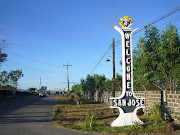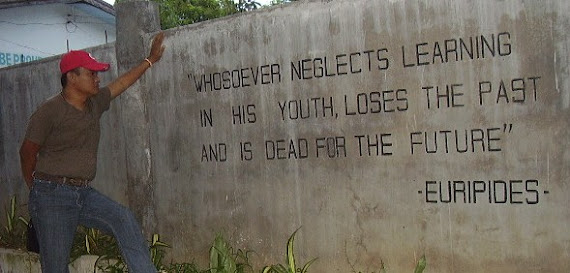
Tonight, the San Jose Centennial Commission headed by Mayor Romulo M. Festin will be having the public launching of the centennial celebration of San Jose with the theme, “Our home. Our heart. Our Pride.” .Want to read the history of the town where I was born? Click here and enjoy our history.
This was written by our local historian Rudy A. Candelario, a Divine Word College of San Jose alumnus and presently working as a senior researcher at the Apostolic Vicariate of San Jose in San Jose, Occidental Mindoro. Kuya Rudy is also a lay minister. Candelario’s contribution and legacy to our rich historical past requires recognition. He even wrote a book entitled “History of Occidental Mindoro” on the occasion of Philippine Centennial celebration last 1998. And I would be very proud if all of his works will be published in a not so distant future.
To trace back the author’s journey in this particular journalistic endeavor, he practically went in every single barangay (village) of San Jose (and the whole province for that matter) for almost twenty (20) years sitting with the elders of certain community for a story telling session that catapulted into a real experience of sharing. He also utilized usual data-gathering approaches such as researches, community-discussion session and the likes.
Like any other historical writing, his piece is in no way complete. For history happens every minute and since events unfold everywhere in our town everyday and every minute, Candelario’s legacy, his historical compilation is still an unfinished business.
We stated above that this particular work of Candelario (“History of San Jose”) involves traditional methods such as the informal story-telling which is a more personal and his approach is very friendly especially to the poor rural dwellers or community members. They are usually senior citizens that have rich experiences to impart, say... in the so-called “Japanese Time” for example.
Other methods used by the author include academic and formal data-gathering techniques such as researches (He even went to National Library and the National Archive in Manila for some data) in both local and national levels.
His present function and capacity in our local Church was of great help in gathering of historical facts,- both narrative and documentary, for data banking. Prior to his writing.- was already done by the priests assigned in every mission area of the province. The author lumped together, I presume,- on a case-to-case basis, every method and approaches in the book in making “History of San Jose” a success. He is also the former Station Manager of DZVT, a local radio station.
San Jose-based students (HS, College and Post Graduate) of History subjects and other related sciences are somehow being helped by this historical reading as reference material for their academic quest. On the other hand, taking the risk of being branded as too trivial, this became a major source of vital information regarding San Jose, my beloved hometown.
Mr. Candelario’s piece, being said that it is in no way a finish product, we as educators and professionals are being challenged to continue this task. To be a historian is to learn as we go along. The key phrase is something like this: “Be methodical in your work and your record keeping. Always think of context, of local color.”
But who will write about the events unfolding each day in San Jose? The scandalous nastiness of our Public Market and Solid Waste Management, the people’s struggle against Intex Resources and Pitkin Petroleum, the Small Town Lottery (STL) and other concerns. In addition, our local historians are not getting any younger.
Calling the enthusiastic and idealistic youth of Pandurucan to write something about your town. Immerse with them. Keep a journal when you intermingle with people. Study things around us as they unfold. Stand up and be counted even beyond May 10, 2010, the San Jose Centennial Celebration.
Spend a lot of time joining the people in their every struggle for self-determination and rights. Get rid of those who ride with historical celebrations for their personal, political and economic gains. Remember, writing history is not exclusively for the influential elites and intellectuals, including political publicists and propagandists. History may also be written by the masses, the common tao like you and me as long as we want to share something, to communicate and connect with people and eventually fight for social transformation. Nobody can know everything but try to expand our knowledge and extend our understanding even if we are not members of our local historical group. Just write something about the past,- people, places and events, you remember most.
Just like what Rudy A. Candelario have taught us and that made him our most credible local historian, ever…
--------
(Photo : SSC File; Mr. Rudy A. Candelario)






I highly respect Mang Rudy for his unselfish devotion to collect the history of MIndoro, particularly San Jose. But I am still wondering who are(or were) the keepers of these oral histories?Are they the women? Why were the women silent in the long history of our province or of our town? Are histories without the faces of women reliable enough? Or the keepers of histories or the writers (not necessarily Mang Rudy) consciously blotted them?For what reasons? Even the women missionaries in Mindoro were not documented. Are the women not important? Was this town built by men alone?
ReplyDeleteI'm just wondering. Maybe we have to write herstories in the future.
eunice